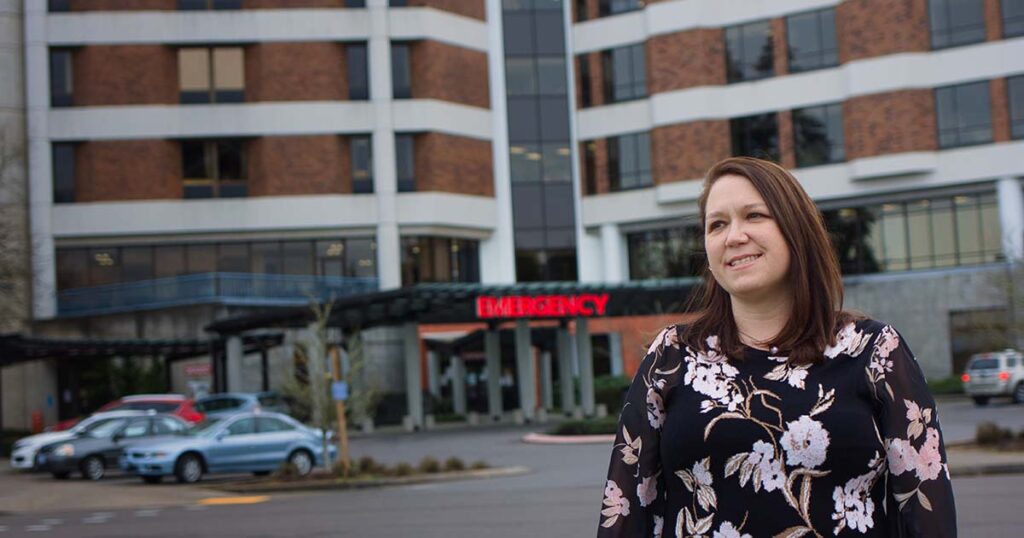
October is national breast cancer awareness month, an annual campaign to increase awareness of the disease and a reminder to women over 40 that it’s time for a mammogram.
Although screening mammograms are an effective tool at detecting cancer, they don’t find roughly one in five cancers. Most of these missed cancers are interval breast cancers, meaning they appear after a woman had a mammogram that was normal but before she returns for her next screening or routine mammogram. Interval breast cancers might be hard to find, or they might not have been present at the time of the exam.
Interval breast cancer, diagnosed within 12 months of receiving a mammogram, often are more aggressive, larger in size and more lethal than screen-detected cancers – even though women may have followed appropriate guidelines.
Veronica Irvin, Celia Strickland Austin and G. Kenneth Austin III Endowed Professor in Public Health, leads research with the Samaritan Cancer program to identify ways to better serve women facing interval breast cancer. And she’s talking with women who meet the criteria for this type of cancer themselves. This includes younger women, women with dense breasts, those using hormone replacement therapy or those with a family history of breast cancer.
Her goal is to help improve these women’s access to care for quick follow-up and treatment. She’s also working with physicians to help improve the process.
A behavioral epidemiologist who completed a post-doctoral fellowship with the National Institutes of Health, Veronica says she wants women to learn from women with interval breast cancer about the symptoms they experienced and any barriers to seeing a doctor or getting appropriate care.
“Our goal with the information we gather is to inform women and health care providers about this risk so that women have better and timely access to care if there is something suspicious,” she says. “We don’t want women to delay care because they just had a normal mammogram and do not feel at risk. Ultimately, we hope to detect cancer at an earlier stage and improve the quality of her life or extend her life.”
In the women studied, those who had an interval breast cancer noticed something was wrong through a breast self-exam or by accident when dressing. Women might only notice one symptom, but that symptom is different for different women. Most interval breast cancers are found as a lump. Some women noticed a cyst, pain or burning sensation, nipple discharge or their breast not looking normal. Others noticed the interval breast cancer after one or two years of screening. Still, others may have had 20 years of regular screening before they experienced an interval breast cancer.
“There can be a lot of noise or different voices that women hear about whether screening is good for them and when to start or stop and how often to get their exam,” Veronica says. “It’s important for women to talk with their provider about these decisions. It’s also important for women to listen to their bodies and advocate for when something is not right. Women know best.”
Be proactive with your breast health
- Keep up regular screenings. Talk to your doctor about when to start mammograms and how often you should come in for regular mammograms.
- Check your breasts regularly – at least monthly. Your body may tell you when something is wrong, but you must be paying attention. And don’t stop after you get a negative mammogram.
- If you notice anything different with your breasts, don’t doubt, don’t wait and don’t be afraid. Call your doctor. The sooner you see your doctor, the sooner you can start treatment. If you don’t have access to a doctor, search for the CDC’s National Breast and Cervical Cancer Early Detection Program. This program helps women with low incomes who are uninsured or underinsured gain access to timely breast and cervical cancer screening, diagnostic and treatment services. Find it at https://www.cdc.gov/cancer/nbccedp/.